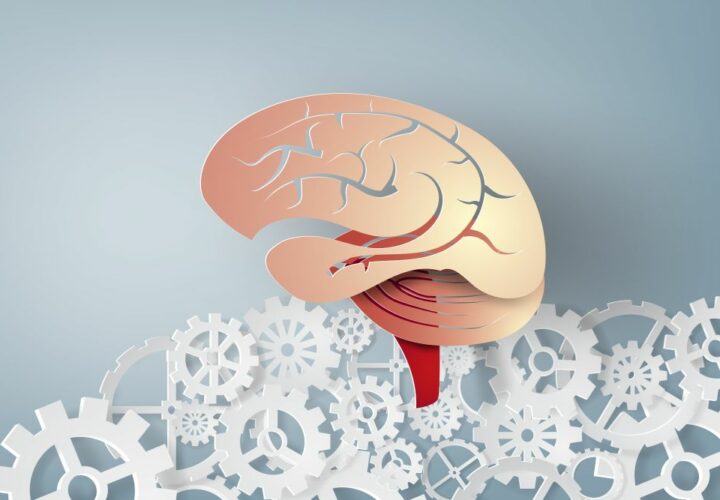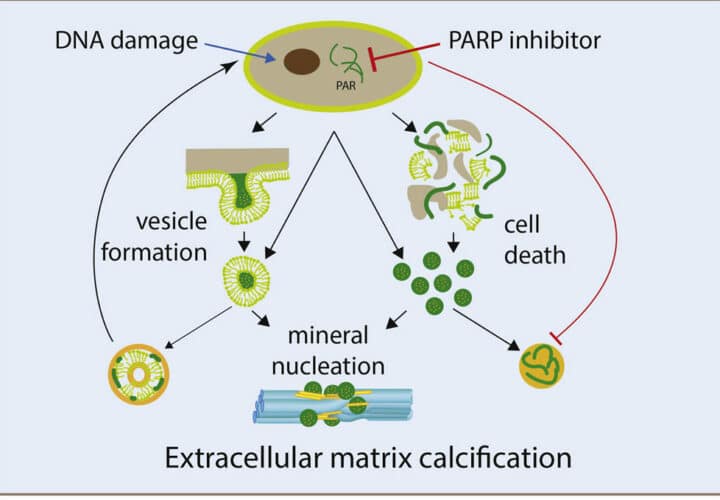Alzheimer’s disease and vascular dementia are the first and second most common forms of dementia. What sets them apart?
As the proportion of older people in the population around the world increases, the prevalence of dementia will increase in turn. By 2030, it is estimated that 78 million people worldwide will be living with dementia, up from an estimated 50 million people today. Alzheimer’s disease is the most common form of dementia, accounting for 60 to 70 percent of total dementia cases. Vascular dementia is the second most common form of dementia, accounting for five to 10 percent of all dementia cases. Vascular dementia is associated with a reduction in blood flow to the brain. People with Alzheimer’s disease will have deposits of toxic amyloid and tau protein plaques in their brain.
Both diseases have similar share risk factors and symptoms, making them sometimes difficult to differentiate. So, what sets them apart? Here are a couple key things to know about vascular dementia.
Getting to know vascular dementia and Alzheimer’s disease
Two different types of dementia, Vascular dementia and Alzheimer’s both fall under the category of cognitive disorders, which means they affect how a person thinks and remembers things. However, they have different causes and different onset symptoms. Here’s a bti about how they’re distinct, in terms of brain changes and in terms of patient experience.
What causes these two types of dementia?
When it comes to Alzheimer’s, some cases are thought to be caused by things we can’t change, with close links to biological variables such as sex (the disease is far more common in women than in men) and genetics. But other cases are more closely linked to nurture, rather than nature: A recent study identified eight risk factors that are linked to about two of every five Alzheimer’s cases. The most prominent of these risk factors are midlife obesity, physical inactivity, and lower levels of education. Other risk factors include hypertension, depression, diabetes, smoking and hearing loss.
Vascular dementia
Vascular dementia shares cardiovascular risk factors with Alzheimer’s, including obesity, hypertension and diabetes. People who experience strokes or heart disease are at an elevated risk of vascular dementia. It also has its risk factors that cannot be controlled — sex and genetics included: Some ethnicities — including Black and Hispanic Americans — have an elevated risk of both cardiovascular disease and vascular dementia. When it comes to sex as a biological variable, the tables are turned: Vascular dementia is more common in men than women.
Understanding the changes in the brain
Vascular dementia: This type often happens when there are issues with the blood vessels in the brain. It can be connected to strokes or issues with blood flow. These changes can create a decline in cognitive health. It’s like when traffic gets jammed up on the brain’s highways, and it affects a person’s thinking and memory.
Alzheimer’s disease: Alzheimer’s Disease is more about changes inside the brain itself. It’s like there’s a mess inside the brain with things that shouldn’t be there. These changes in the brain can lead to a decline in thinking and memory. It’s not about the blood vessels, but about what’s happening inside the brain.
The symptoms and the way they show up
On average, people with vascular dementia will progress faster than those with Alzheimer’s disease. There is some overlap in the symptoms of each disease, but each has a unique profile.
Alzheimer’s disease
his type usually starts very slowly — more so than vascular dementia — and the first sign is often memory trouble. It might be short-term memory, like forgetting something you just learned. As it goes on, it can mess with a person’s language, their ability to find their way, and their problem-solving skills. Alzheimer’s symptoms include:
- Forgetfulness and mild cognitive impairment
- Memory problems
- Difficulty with language, organization, and calculations
- Loss of independence and difficulty doing everyday tasks
- Changes in personality and mood
However, the pathology that signifies Alzheimer’s disease in the brain may begin to form some 10 to 15 years before the disease’s symptoms become outwardly noticeable. Once symptoms surface, the disease progresses quickly, with an average of four to eight years life expectancy after diagnosis, although some people may live significantly longer with Alzheimer’s.
Vascular dementia
Meanwhile, when a person has vascular dementia, their symptoms might show up more suddenly. The symptoms of vascular dementia vary depending on which part of the brain is deprived of blood flow. Sometimes, these symptoms come after a stroke or another health problem.
Differing from Alzheimer’s, in this case, difficulty remembering things might not be the first sign. Instead, a person might have trouble making decisions, planning things, or organizing stuff. It’s like having a roadblock in your brain, and that can create problems with thinking.
These symptoms can include:
- Trouble with concentration and communication
- Memory problems
- Confusion
- Symptoms of stroke such as sudden weakness and trouble speaking
- Personality and mood changes
- Issues with balance, walking and gait

Diagnosing Alzheimer’s disease and vascular dementia: Understanding the difference
Diagnosing these two distinct types of dementia can be a bit like solving a puzzle, as both conditions share some similar symptoms, such as memory problems and difficulties with thinking. To figure out if someone has one or the other — or both — of these types of dementia, doctors use tests and health criteria. They might ask questions about a person’s health and do some scans of the brain. It’s like putting together pieces of a puzzle. In all cases, they’ll need to rule out other disorders before they can say for sure which type of dementia a person has.
Diagnosing Alzheimer’s
While there are many biomarkers for Alzheimer’s disease, they don’t have perfect track records. Typically, Alzheimer’s disease is diagnosed through a combination of PET brain scans, spinal tap, and cognitive testing. PET brain scans and spinal taps are used to assess the levels of beta-amyloid and tau protein plaques.
Many biotechnology companies are working on developing blood tests for amyloid and tau, which would be less invasive than a spinal tap. However, many of these blood tests are less effective in diagnosing the disease in Black patients.
Further, experts caution that, because Alzheimer’s research has typically included majority white participants, some diagnostic cognitive tests may have less efficacy among different ethnic and racial groups.
New cognitive tests are trying to overcome these limitations by looking for universal biomarkers. Cognetivity’s five-minute test assesses how quickly a person can recognize animals on a tablet screen. Other researchers are looking at the retina, testing whether its thinning is an indicator for early Alzheimer’s disease.
However, there is still a great deal yet to understand about biomarkers in Alzheimer’s, and diagnosis remains challenging.
Vascular dementia diagnosis
Unlike Alzheimer’s, vascular dementia isn’t marked by a the buildup of protein plaques in the brain. Rather, it’s diagnosed by looking closely at the way blood moves through the brain.
Vascular dementia can be diagnosed using an MRI scan to identify abnormalities in the brain in conjunction with cognitive assessments. These abnormalities include signs of stroke, thinning blood vessels near the brain and changes in brain connectivity. In addition, some tests will measure blood vessel stiffness and elasticity.
Can you have Alzheimer’s and vascular dementia at the same time?
Due to shared risk factors, at least one in 10 people develop mixed dementia. The most common form involves a combination of Alzheimer’s disease and vascular dementia.
Treatment of Alzheimer’s and vascular dementia
Alzheimer’s disease
Most approved treatments for Alzheimer’s disease target cognitive symptoms and memory dysfunction, rather than the underlying pathology.
Aricept, exelon and razadyne are cholinesterase inhibitors which function by preventing the breakdown of the neurotransmitter acetylcholine. Namenda is another drug approved for treating Alzheimer’s cognitive symptoms. Belonging to a class of medications known as NMDA (N-methyl-D-aspartate) receptor antagonists, it blocks the effects of the neurotransmitter glutamate, preventing hyperactivation and cell death.
Aduhelm is the first disease-modifying therapy approved by the FDA for treating early-stage Alzheimer’s, however its efficacy remains unclear. Part of a class of drugs called anti-amyloids, it was designed to target and clear beta-amyloid plaques in the brain There are several other anti-amyloid drug candidates for Alzheimer’s treatment in the clinical trial pipeline now, and a follow-up to Aduhelm could be up for FDA approval as soon as January 2023.
(In February 2024, Biogen took Aduhelm off the market indefinitely.)
Vascular dementia
So far, there is no cure or specific treatment for vascular dementia. To potentially slow the rate of its progression, a doctor may prescribe medication to lower blood pressure, reduce cholesterol, prevent blood clotting, and keep blood sugar under control.
Both vascular dementia and Alzheimer’s share some common ways to help patients. An early diagnosis is really important because it helps manage symptoms and keeps life as good as possible. Living a healthy lifestyle, like eating well and staying active, can help lower the risk factors for both types of dementia.
There are also medications that can help mitigate symptoms. Plus, caregivers play a big role in helping patients and providing support.
Caring for people with dementia
Taking care of someone with dementia is a tough job, and caregivers need a lot of help and support. Ongoing research and studies, including the ones you can find on Google, are important for understanding these conditions better and finding better ways to help patients.
In summary, the diagnostic process for Alzheimer’s Disease and Vascular Dementia involves clinical assessment, cognitive testing, brain imaging, and other tests to rule out different conditions. The key distinction is that Alzheimer’s diagnosis often focuses on brain structure changes associated with the disease, while Vascular Dementia diagnosis looks for signs of vascular damage and specific risk factors. These steps help doctors determine the right treatment and support for patients based on the type of dementia they have.
Prevention strategies
The best prevention strategies for both Alzheimer’s and vascular dementia include healthy lifestyle choices with science-backed correlations to lower dementia risk. These include eating a Mediterranean-style diet, getting enough exercise, and managing existing obesity, diabetes and hypertension. Continued learning and socializing are other lifestyle factors that appear to be linked to lower dementia risk in some studies. Meanwhile, new treatments for Alzheimer’s and vascular dementia are in development.
UPDATED 19 November 2023, 8:48 P.M. ET: This article was updated to meet our formatting standards.
UPDATE: 3 March 2024, 9:27 P.M. ET. In February 2024, Biogen took Aduhelm off the market, citing financial concerns. Although the drug did receive accelerated, conditional FDA approval for the treatment of early Alzheimer’s disease in 2021, it is no longer available to new patients. The company announced it would sunset trials in May 2024 and cease supplying the drug to current patients in November 2024.






Diagnosed with Scleroderma late last year, I’m noticing deterioration of concentration, and increasing confusion daily. It’s difficult to find doctors interested in helping. I live in a small regional town in the far south coast of NSW, Australia.
My wife was diagnosed with Alzheimers at the end 2019 and s gradually getting worse I am finding it hard at times with adminstering he medication and getting her to drink more fluid,other wise it’s managable.
Peter, thank you so much for sharing with us and for being part of the community here — drinking fluids and staying hydrated can definitely be a challenge! You’re not alone in that! Here’s another caregiver story about this same struggle (and a clever, sweet solution) — Best of luck and keep us posted. https://www.beingpatient.com/dementia-dehydration-jelly-drops/
My Mom has been diagnosed with vascular dementia and we are having a difficult time with k doing how to handle her psychosomatic complaints. What is the best way to handle her complaints of a headache, stomach pain, can’t breath or just not feeling right?! All physical sources have been ruled out. Her apathy, well I know there’s really nothing we can do about that Please help we just don’t know what to do
Hi Lois, dealing with psychosomatic complaints in someone with vascular dementia can be challenging. We recently did a Live Talk with Doctor Dylan Wint on the common behavioral symptoms of dementia and interventions to address them. You might find it helpful: https://www.beingpatient.com/dementia-behavior-dylan-wint/?utm_source=organic&utm_medium=social . The FDA also recently approved the first drug for Alzheimer’s agitation, Rexulti. https://www.beingpatient.com/fda-approval-alzheimers-agitation-drug-rexulti/ If you feel like agitation is what your mother may be experiencing, it could be beneficial to talk to a doctor to learn more about Rexulti. Take care.